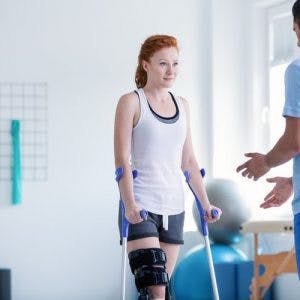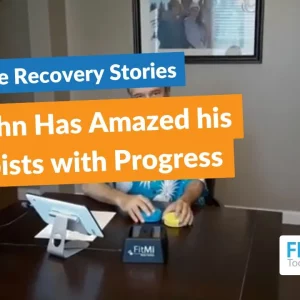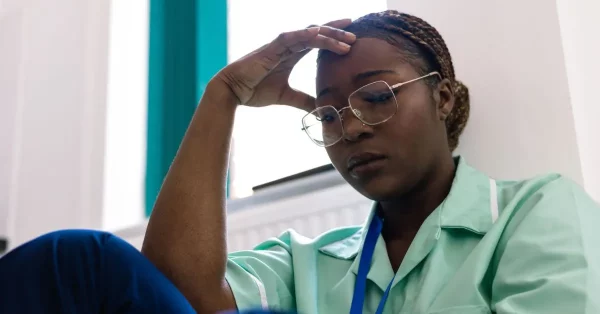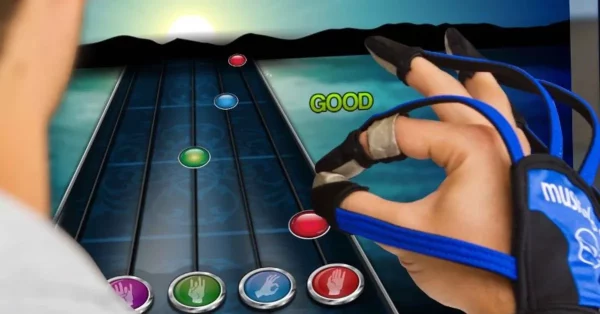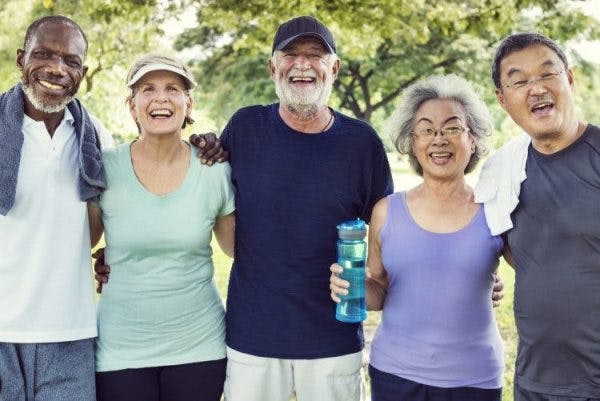Compensatory strategies for stroke patients are similar to “shortcuts” for patients with range-of-motion, strength, or coordination problems after stroke. If a stroke survivor eats with her left hand because her right hand is too slow or weak after a stroke, she is using a compensatory strategy to finish a meal.
Sometimes compensatory strategies for stroke patients are necessary for carrying out activities of daily living and ensure safety. But many patients reach a “tipping point” where compensation gets in the way of recovery.
You’re about to learn when it’s appropriate to use compensatory techniques, and when you should challenge yourself to exercise the weaker/slower limb. Challenging yourself will help you get as close to a full recovery from stroke as possible.
What are Compensatory Strategies for Stroke Patients?
Compensation involves accomplishing a task in a different way than before your stroke injury. A common compensatory strategy after a stroke is leaning the torso forward to reach an object instead of fully extending the affected arm.
Recovery, on the other hand, involves accomplishing a task the same way you did before injury. Working hard during rehabilitation so that you can use your affected arm to reach for an object the way you did before takes a lot of patience.
It’s important to note that compensatory strategies are not bad. They are helpful and necessary sometimes. But, when they reduce the amount of practice you are getting, they can limit your stroke recovery.
To prevent this from happening, you need to first understand spasticity and synergy patterns.
When Spasticity and Synergistic Movement Get in the Way
Many stroke patients struggle with “normal movement” after stroke because of spasticity and synergy patterns.
Spasticity involves stiffness of the affected muscles. If there is spasticity in your arm or hand, it can be difficult to open your palm or reach for an object on a shelf.
Synergy patterns disrupt “normal movement” by causing muscles in your arms or legs to misfire with purposeful and non-purposeful movement. This can cause the shoulder to hike when you try to move your affected arm forward, for example. Synergy patterns can also occur during non-purposeful movement, like sneezing.
Patients should view these “problems” as signs of recovery from stroke because they are! The presence of spasticity means that the patient is getting some neuronal signaling to their muscles. And the onset of synergy patterns means that movement is returning to the body.
Spasticity and synergy patterns will diminish in time especially if the patient continues to practice movements during rehabilitation. Mobility will improve as a result of repetition of input to the brain.
Then, somewhere along the way, you may outgrow the need for certain compensatory strategies. But when?
Persistence Is the Cure for Compensation Techniques After Stroke
Remember that compensatory strategies for stroke patients are practical but eventually get in the way of recovery. To work past the need for compensation techniques, you need to constantly question your methods — preferably on a daily or weekly basis.
Each week, ask yourself, “What am I doing differently than before my stroke, and where do I feel ready to challenge myself?” Some compensatory strategies are necessary for your safety, like using a cane or walker. Always consult with your therapist about modifying a daily activity so that you can challenge yourself safely.
For example, if you notice that you lean your torso forward when you reach for the table salt, see if you can sit back in your chair and extend your arm more fully to get it. It may take a little longer, but you are stimulating your brain towards recovery.
And if you can’t do it today, keep trying, and you may improve. This is how you can prevent yourself from getting stuck in a rut and you will progress.
Benefitting from the Slow Pace of Stroke Recovery
Recovery will always include slowing down and doing things a more difficult way. Choosing to slowly use your affected arm instead of using a compensatory strategy means you might take longer to accomplish certain tasks. Be patient when choosing to do things without compensatory strategies for stroke patients.
When you slow down and accomplish tasks the way you did before your stroke, you are stimulating your brain. It doubles as therapy. Stimulating your brain this way will help you strengthen the neural networks responsible for recovery. The more you practice, the more you stimulate neuroplasticity to occur.
This is how you can improve your chances of a full recovery from stroke. Patients that accomplish a full recovery are constantly challenging themselves to do things the “hard way” – without compensatory strategies.
Although it’s more difficult, and perhaps more frustrating, it will lead to more recovery in the long-run.
Maximizing Motor Recovery After Stroke
Compensatory strategies for stroke patients should not be viewed as bad. They are often helpful and necessary to get things done safely, or efficiently when needed.
However, if patients become too reliant on these “shortcuts,” they may get stuck in a rut and stop progressing. When patients remain persistent and constantly challenge themselves, they’ll have the best chance at recovery.




